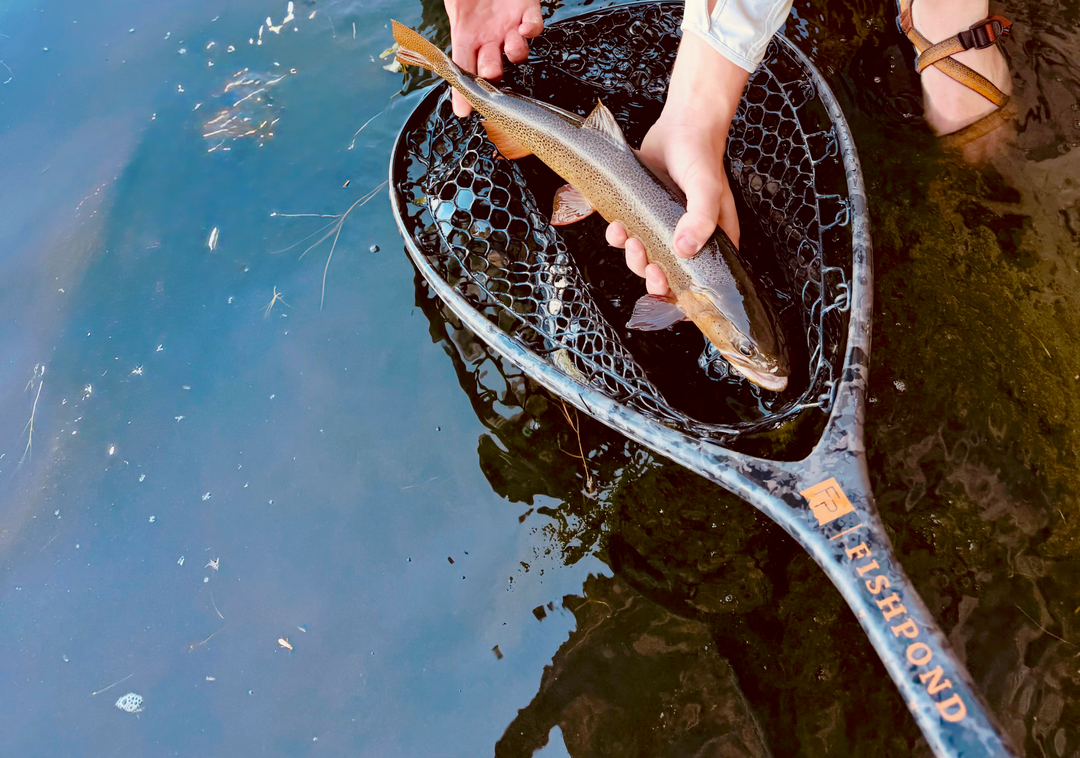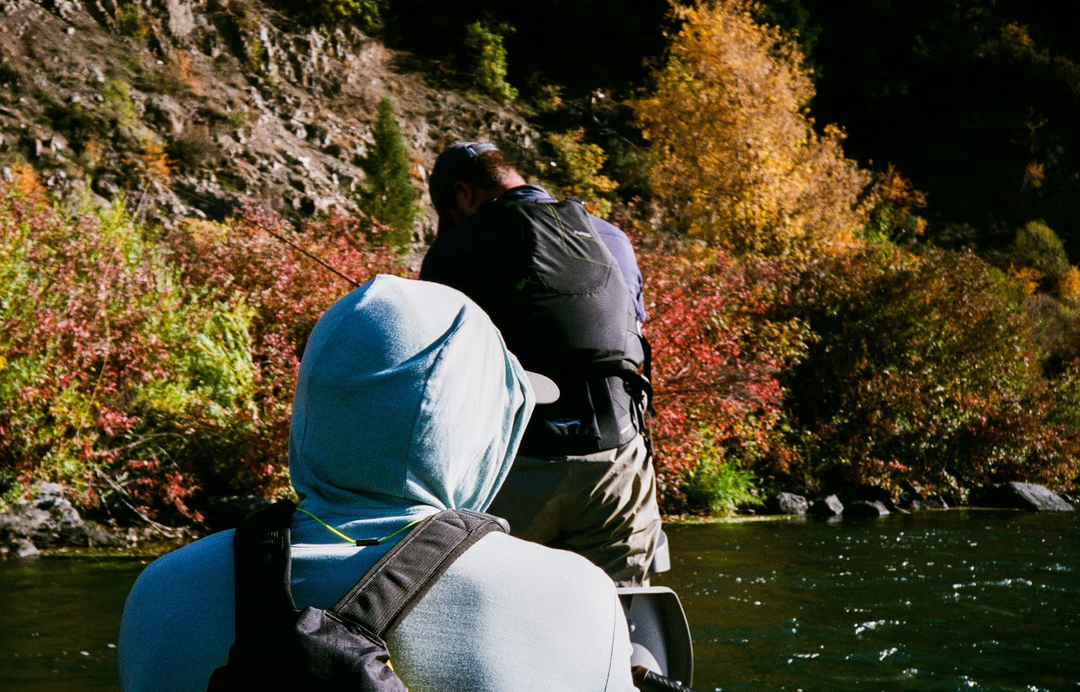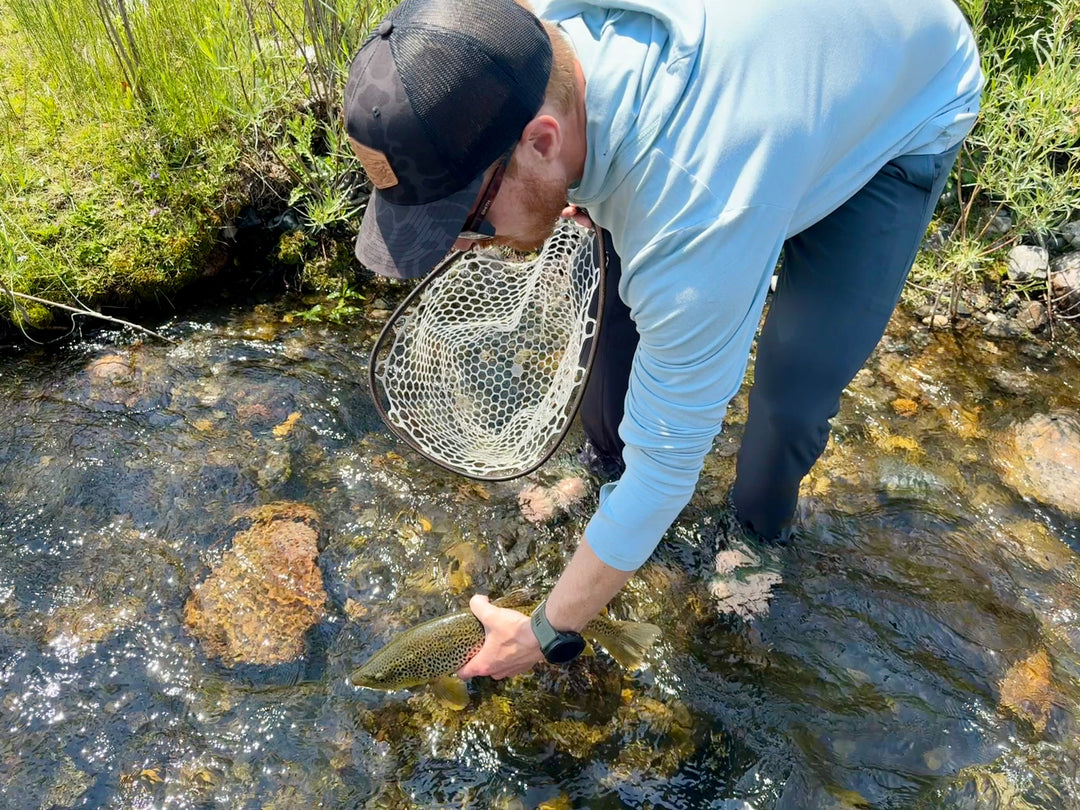Why Fall Trout Streamer Fishing is the Best

There’s a reason fall is my favorite season. The mornings are crisp, the cottonwoods and aspens glow yellow and orange, and the air smells faintly of smoke from fireplaces and land-clearing burns. The drop in temperature signals change—trees shedding their leaves, insects dwindling, and fish shifting their feeding patterns. For most fly fishers, this is when the rods get stowed away and the focus turns to hunting season, football, or waiting for the next hatch in spring.
But those who pack up early are missing out. Fall is not just good—it’s the best time of year for trout fishing with streamers. From the solitude to the aggressive eats, from the chance at bigger fish to honing skills that carry into other fisheries, streamer fishing in the fall offers something you won’t find during summer hatches or delicate dry fly fishing.
If you’re not afraid of cold mornings, heavy flies, or the unknown lurking beneath the surface, this season is your time.
1. No One’s on the Water
One of the main reasons fall streamer fishing is unmatched is solitude. In summer, rivers can feel like theme parks—boats everywhere, fly fishers stacked shoulder-to-shoulder in the most famous runs, and rising trout that have seen every beetle, ant, and hopper pattern tied at the bench. Competition is heavy, and fish become wary.
Come late fall, the crowds vanish. Once the hatches slow, delicate dry fly fishing becomes unreliable, and the weather turns cold, most anglers give up. That leaves entire stretches of rivers and creeks to the few dedicated streamer fishers still out there. Fishers who stick it out suddenly find themselves with room to breathe, able to cover water without having to race another drift boat down the bank or compete with five other anglers for a single pool.
The lack of pressure benefits the fish, too. Trout that were heavily targeted all summer get a reprieve, and when they see a large fly moving past, they’re far more willing to commit. Fewer anglers plus more willing trout equals the kind of fishing that makes fall unforgettable.
2. Cover More Water, Explore More Rivers
Streamer fishing is not about standing in one run until something happens. It’s active—cast, strip, step, repeat. Unlike nymphing where you might hammer one seam until a fish finally eats, streamer fishing is about covering water quickly.
That constant motion is freeing. In the fall, when the weather turns cool and the rivers are quiet, streamer tactics push you to explore. Instead of sticking to the same well-known spots, you start wandering—down new trails, along unfamiliar shorelines, or into side channels. Sometimes you find smaller fish eager to chase, other times you stumble into deep water holding a fall trout that’s bigger than anything you’ve seen all summer.
Exploration in fall fishing is also practical. The drop in flows often exposes structure—undercut banks, woody debris, shelves, and tails of pools—that can be hidden in spring. You get to see the bones of a river, knowledge that will serve you when flows rise again. Every day of streamer fishing in the fall is an orvis guide–level education in river reading, giving you insights that delicate summer tactics never quite reveal.
3. Bigger Fish
Let’s be real: the main reason people throw streamers is to hook bigger fish. While smaller fish will chase out of aggression or curiosity, it’s the chance at that heavy, butter-colored brown or thick-shouldered rainbow that keeps you stripping line through cold water.
Insects aren’t as abundant in fall. Trout can’t rely on a steady hatch of mayflies or caddis, so they switch focus to bigger meals—baitfish, sculpins, and even smaller trout. This makes streamer patterns like wooly buggers to larger lies with double or triple articulation incredibly effective.
The Spawn Factor
Brown trout spawn in the fall, which makes them particularly aggressive. They’ll attack anything that looks like a threat, especially intruders around redds. It’s one of the reasons you see so many explosive streamer eats this time of year.
But ethics matter. Fish actively on redds should be left alone. If you see light-colored gravel with paired-up trout, move on. The better play is to fish below spawning zones, in deeper pools where aggressive pre- and post-spawn trout stage. These fish are fair game and will smash a fly with little hesitation.
Comparing Seasons
Spring gets a lot of love for trophy trout—higher water, abundant food after a long winter, and pre-spawn conditions all play a role. But fall is just as good, if not better, for most fly fishers. Lower water levels concentrate fish, the drop in temperature makes trout more active, and the combination of aggression and fewer anglers makes it prime time for connecting with a true giant.
4. The Eats Are Second to None
Delicate dry fly fishing has its charm—watching a trout rise slowly through the surface film to sip a size 20 midge is beautiful. But when a 22-inch fall trout explodes on a streamer in deep water, that beauty feels tame compared to the chaos.
Streamer eats are violent. They’re sudden. One strip, nothing. The next strip, your rod doubles over and a shockwave rips through your arm. The fly sinks, disappearing in a flash, and before you know it, you’re in a fight with something that could be the fish of the season.
Unlike dry fly fishing, where you can usually gauge a trout’s size by its head or shoulders as it rises, streamer eats keep you guessing. Was that flash a 18-inch cutty or a 26-inch brown? You don’t know until the fish turns and pulls back. That uncertainty is addictive—it keeps every cast charged with potential.
Even smaller fish provide entertainment. It’s not uncommon to have a 14-inch trout slam a 5-inch streamer, and while it may not be the monster you hoped for, it shows just how aggressive fall trout can be when they’re hungry or territorial.
5. Preparing for Saltwater - Cold Water to Warm Water
Streamer fishing is trout fishing’s boot camp for saltwater. The casting, the flies, the hook set—it all mirrors what you’ll do chasing bonefish, tarpon, stripers, or GTs. And for most fly fishers, saltwater represents the pinnacle of the sport.
When you’re throwing heavy streamers with a sinking leader, stripping aggressively, and setting with force instead of a dainty trout lift, you’re training for the salt. The transition from pulling a wooly bugger through Montana streams to dropping a baitfish pattern in front of a striper on the Atlantic shore isn’t as far as you’d think.
Streamer fishing also builds confidence with bass fishing (and predator fishing like pike and musky). Fall is an excellent time to target smallmouth bass with streamer tactics. Just like trout, they key in on large flies, respond to aggressive strips, and often hold in deeper, colder water. The crossover between trout and bass fishing in the fall is seamless, giving you even more options when trout streams are icy or crowded with spawning fish.
Extra Fall Fly Fishing Tactics to Keep in Mind
While this article is about why fall streamer fishing is the best, it’s worth pointing out a few tactical details that make the difference:
-
Use sinking leaders or sink-tip lines. Fish are often deeper in late fall, and you’ll need to get your flies down. A sinking leader is an easy addition to your setup.
-
Go big. Don’t be afraid to throw large flies—even oversized patterns. Trout in cold water want calories, and a 5-inch streamer can imitate a sculpin, baitfish, or even a mouse. These flies sit in boxes most of the year - pull them out and use them now!
-
Change your retrieve. Some days trout want a fast, aggressive strip. Other days, a slow, steady swing works better. Mix it up until you find the trigger.
-
Match conditions. Cloudy weather often brings fish shallow, making them more willing to chase near the surface. Bright, cold days usually push them deeper.
-
Don’t overlook smaller fish. While the main reason to streamer fish is often the shot at bigger trout, you’ll catch plenty of smaller fish that simply can’t resist the action.
Conclusion
Fall streamer fishing combines everything anglers love about fly fishing into one season. The solitude of empty rivers, the thrill of exploration, the chance at bigger fish, the ferocity of the eats, and the preparation it provides for bass and saltwater all come together between the drop of the first leaves and the rise of winter flows.
Streamer fishing in the fall isn’t delicate, it isn’t always pretty, and it isn’t for the faint of heart. But it’s real, raw, and thrilling—an experience every angler should make a priority.
Streamer fishing is about as close as you can get to getting laid without committing adultery. Buy your spouse a streamer setup and keep the good times rolling.




